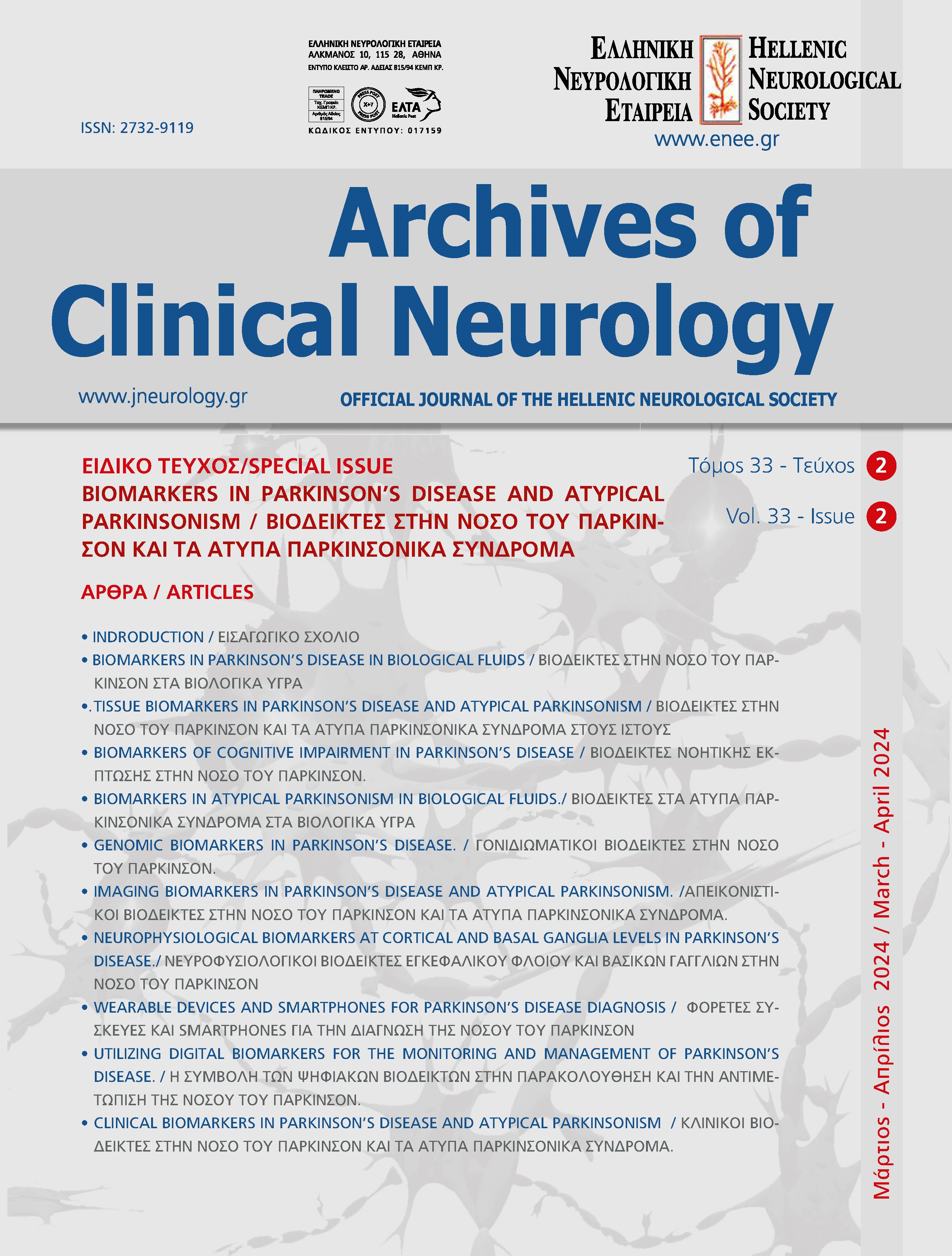NEUROPHYSIOLOGICAL BIOMARKERS AT CORTICAL AND BASAL GANGLIA LEVELS IN PARKINSON’S DISEASE
Keywords:
Parkinson’s Disease, biomarkers, cerebral cortex, basal ganglia, neurophysiology, oscillatory activity, phase-amplitude coupling, local field potentialsAbstract
Parkinson’s disease (PD) is a complex neurodegenerative disorder, associated with dopaminergic
denervation of the basal ganglia (BG), resulting in aberrant activity patterns of surviving neurons. Early
electrophysiological recordings in parkinsonian animals at both cortical and BG level helped in investigating
cortico-thalamo-BG-cortical circuit dysfunction and developing the models of PD-related changes in neuronal
activity (rate, rhythm, or synchronization). In addition, invasive recordings in PD patients during Deep Brain
Stimulation (DBS) procedure, apart from verifying a lot of characteristics of the models, contributed to the
identification of neurophysiological parameters that could play the role of a biomarker. In the field of DBS
neurophysiology, the term biomarker is commonly used to describe a brain activity pattern that provides
information, apart from the pathophysiological changes, for a specific clinical condition or a therapeutic
effect. Local field potentials (LFPs) represent synchronized presynaptic and postsynaptic activity of large
neuronal populations in direct vicinity to the implanted electrode. LFPs from DBS electrodes could give
direct insight into electrophysiological dynamics of affected network nodes targeted by DBS. This review
will discuss some potential biomarkers that characterize the neurophysiological changes in PD and their
possible utility for monitoring and treatment of the corresponding PD symptoms.


